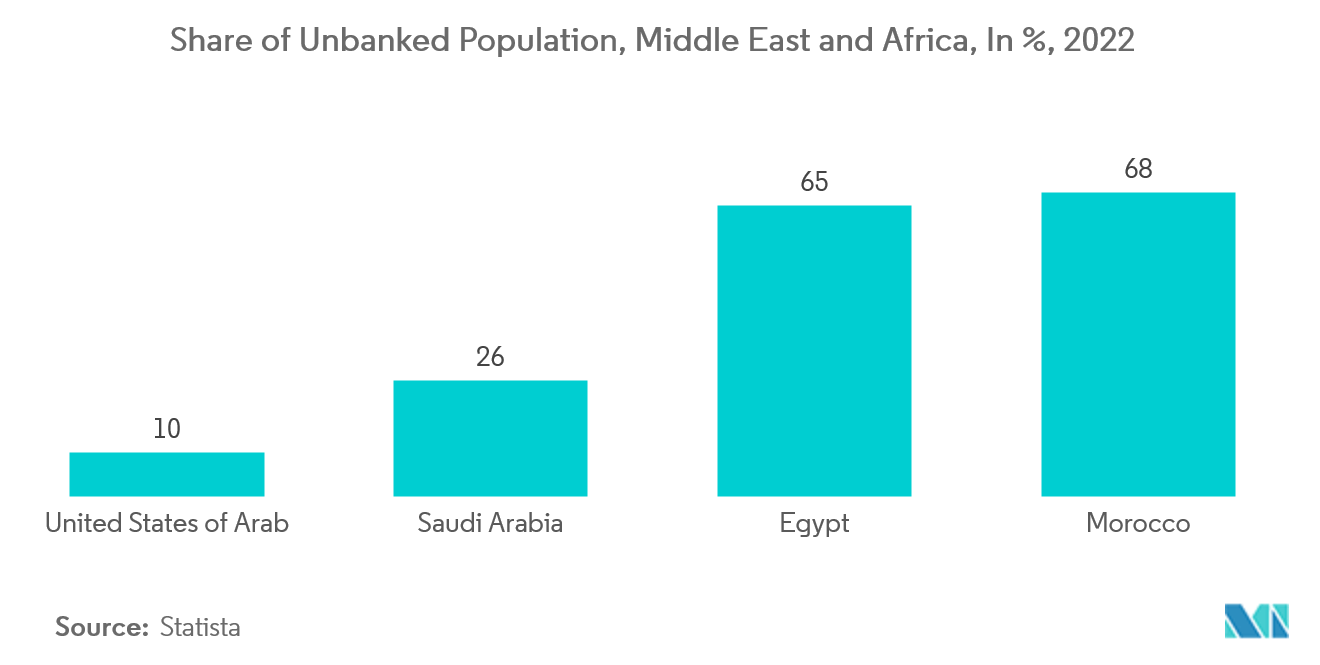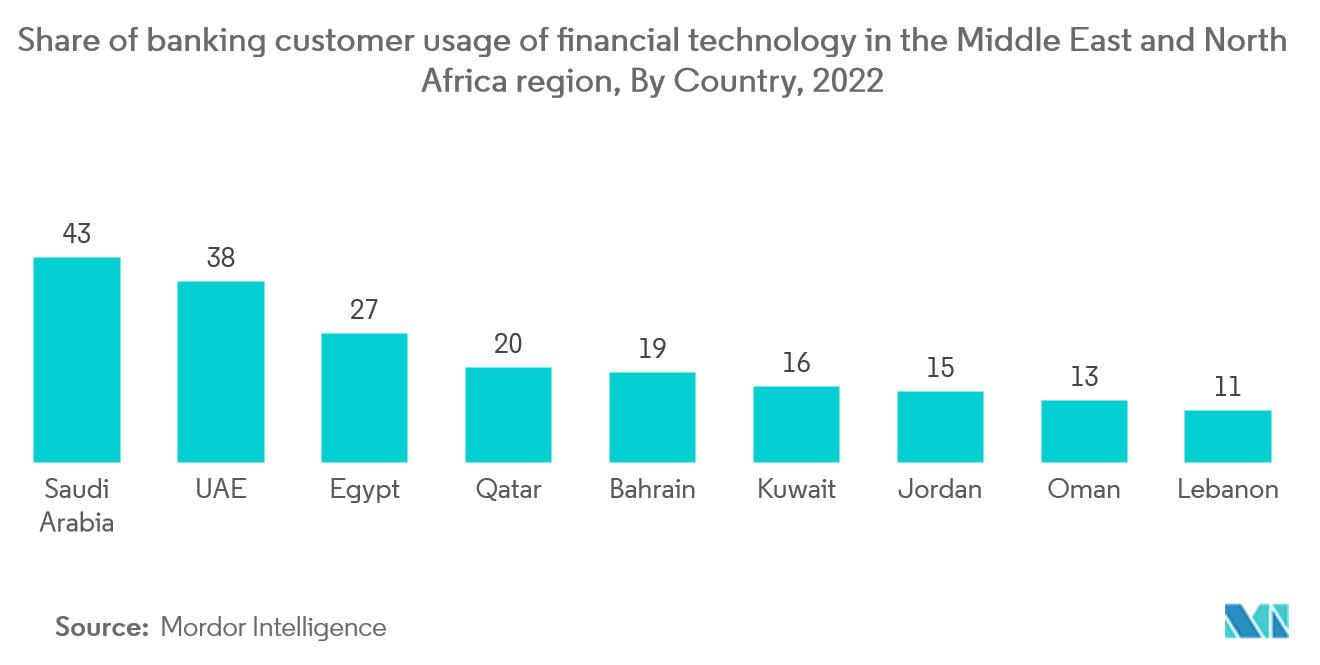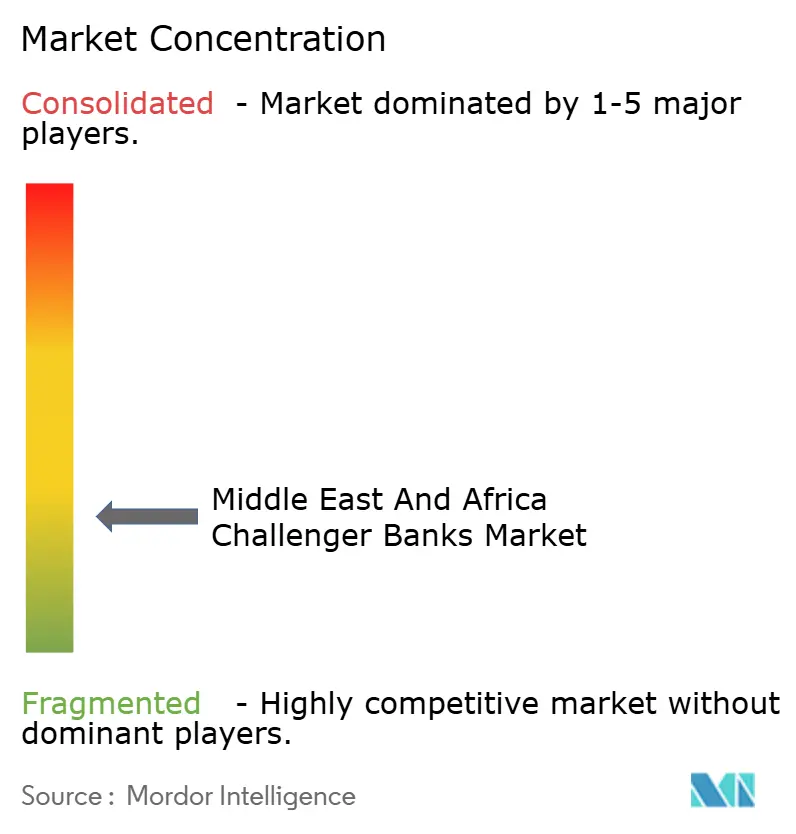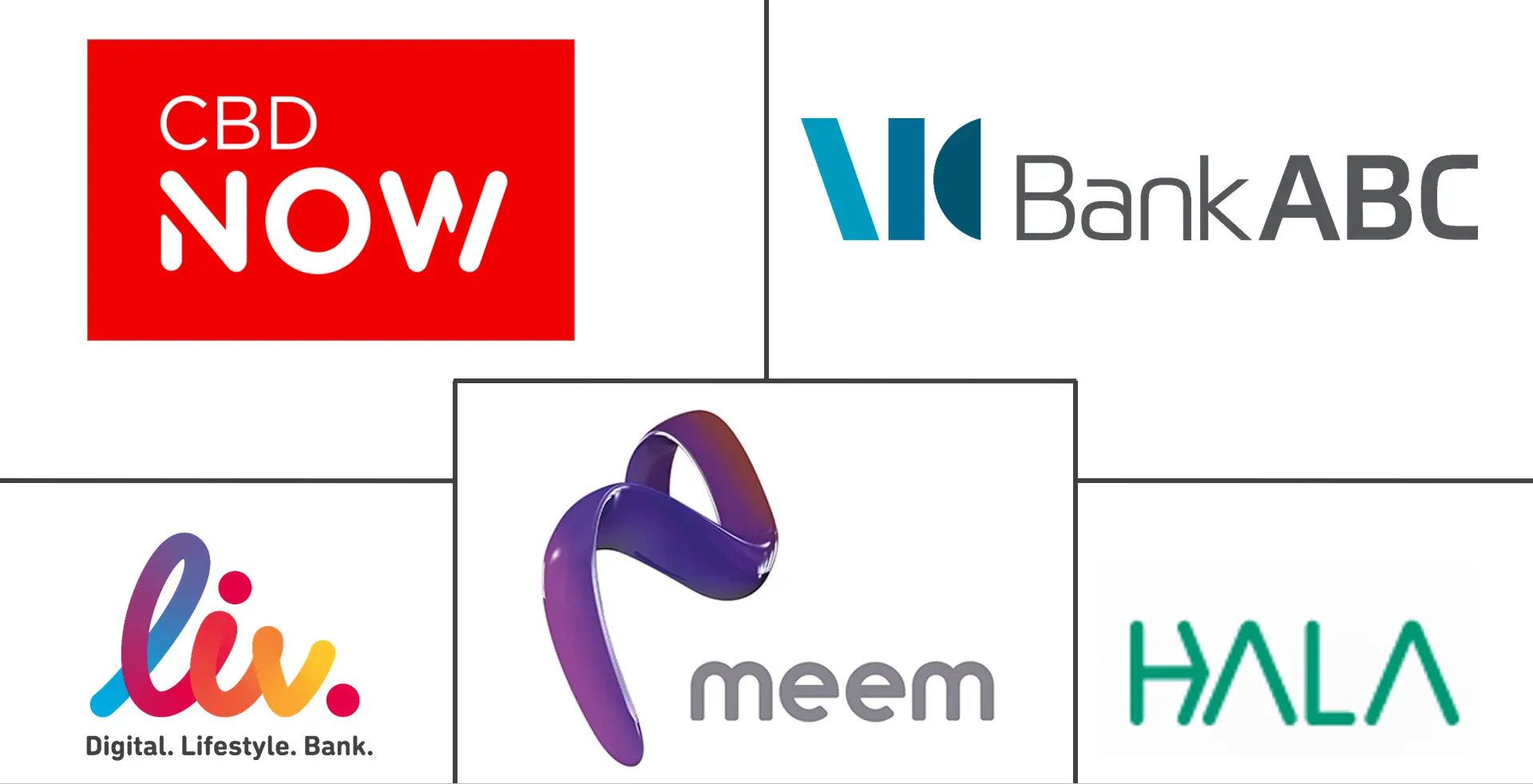
Middle East And Africa Challenger Banks Market Analysis by Mordor Intelligence
The Middle East And Africa Challenger Banks Market size is estimated at USD 81.80 billion in 2025, and is expected to reach USD 134.77 billion by 2030, at a CAGR of 10.5% during the forecast period (2025-2030).
There is increasing incorporation of digital means by the traditional players in the region and with a sigma to opt for bank credit in this region, unbanked population levels are always recorded high. There has been a decreasing trend in the unbanked population levels in the region. And the present pandemic conditions increased the importance of digital adoption. The main challenge today remains onboarding and customer experience, both of which still need to be more manual and efficient. Digital banks could also open up opportunities for local entrepreneurs. However, barriers to entry and the sheer scale of traditional banks make it difficult to imagine a digital-only challenger bank starting from scratch in the Middle East. Challenger banks and neobanks from the Indian sub-continent, Britain, and the US are expanding into the region. The COVID-19 pandemic slammed shut a decade-long window of opportunity for banks. Banks in the Middle East and Africa faced steep falls but reasonably steady recoveries.
Middle East And Africa Challenger Banks Market Trends and Insights
Large Unbanked Population in the region
Having a bank account and being able to withdraw or transfer money at any time is one of the things that people in developed countries take for granted, like clean water, electricity, or, to a lesser extent, internet access. In many regions of the world, however, access to basic financial services is anything but given, with 1.7 billion people still “unbanked.” Thanks to the rise of digital payment options and challenger bank-friendly regulatory environment in the region. The number of unbanked populations in the region, as a whole, has been reduced over the years.

Regulatory Reforms Will Drive the Market
Before the COVID-19 pandemic, digital transformation was a priority for the majority of Middle Eastern countries, with government and regulatory bodies not only supporting digital banking initiatives but actively advocating for them. The Middle East has a favorable regulatory landscape for the development of digital financial services, as evidenced by the fact that many countries in the region have incorporated fintech innovations into their vision statements. As a result, regulators are striving to accelerate the issuance of financial institution licenses and make the regulatory environment more accommodating to both new and existing participants. The Saudi Central Bank's open banking policy is one example of an initiative that seeks to accelerate the implementation of open banking.

Competitive Landscape
The Middle East and Africa challenger banks market is fragmented, with many players. The report includes an overview of challenger banks operating across the region. We wish to present a detailed profiling of a few major companies that cover product offerings, regulations governing them, their headquarters, and financial performance. Currently, some of the major players fragment the market are Bank ABC, Meem Digital Bank, Hala, CBD Now Bank, and Liv Bank.
Middle East And Africa Challenger Banks Industry Leaders
-
Bank ABC
-
Meem Digital Bank
-
CBD Now Bank
-
Liv Bank
-
Hala
- *Disclaimer: Major Players sorted in no particular order

Recent Industry Developments
- September 2022: New challenger Wio Bank launched in the UAE. Wio Bank, the region's first platform bank, officially launched operations in the UAE, with its headquarters in Abu Dhabi.
- July 2022: Mashreq launched a new supply-chain finance platform. Part of Titan, a digital corporate banking platform, lets business clients onboard their entire vendor base.
Middle East And Africa Challenger Banks Market Report Scope
Challenger banks are digital banks that harness the power of modern technology to provide customers with the financial services they need anywhere, anytime. They are considered challenger banks depending on where one lives because they tend to compete with or challenge big banks using modern financial practices. An understanding of the challenger banks in the Middle East and Africa, the regulatory environment, challenger banks, and their business models, along with detailed market segmentation, product offerings such as deposits and loans to define their financial performance indicators, current market trends, changes in market dynamics, and growth opportunities. In-depth analysis of the market size and forecast for the various segments. The challenger banking market in the Middle East and Africa is segmented by service type (payments, savings products, current accounts, consumer credit, loans, and other service types) and by end-user type (business segment and personal segment).
The report offers market sizes and forecasts in value (USD) for all the above segments.
| Payments |
| Savings Products |
| Current Accounts |
| Consumer Credit |
| Loans |
| Other Service Types |
| Business Segment |
| Personal Segment |
| By Service Type | Payments |
| Savings Products | |
| Current Accounts | |
| Consumer Credit | |
| Loans | |
| Other Service Types | |
| By End-User Type | Business Segment |
| Personal Segment |
Key Questions Answered in the Report
How big is the Challenger Banks In Middle East And Africa Market?
The Challenger Banks In Middle East And Africa Market size is expected to reach USD 81.80 billion in 2025 and grow at a CAGR of 10.5% to reach USD 134.77 billion by 2030.
What is the current Challenger Banks In Middle East And Africa Market size?
In 2025, the Challenger Banks In Middle East And Africa Market size is expected to reach USD 81.80 billion.
Who are the key players in Challenger Banks In Middle East And Africa Market?
Bank ABC, Meem Digital Bank, CBD Now Bank, Liv Bank and Hala are the major companies operating in the Challenger Banks In Middle East And Africa Market.
What years does this Challenger Banks In Middle East And Africa Market cover, and what was the market size in 2024?
In 2024, the Challenger Banks In Middle East And Africa Market size was estimated at USD 73.21 billion. The report covers the Challenger Banks In Middle East And Africa Market historical market size for years: 2020, 2021, 2022, 2023 and 2024. The report also forecasts the Challenger Banks In Middle East And Africa Market size for years: 2025, 2026, 2027, 2028, 2029 and 2030.
Page last updated on:
Middle East And Africa Challenger Banks Market Report
Statistics for the 2025 Middle East And Africa Challenger Banks market share, size and revenue growth rate, created by Mordor Intelligence™ Industry Reports. Middle East And Africa Challenger Banks analysis includes a market forecast outlook for 2025 to 2030 and historical overview. Get a sample of this industry analysis as a free report PDF download.



